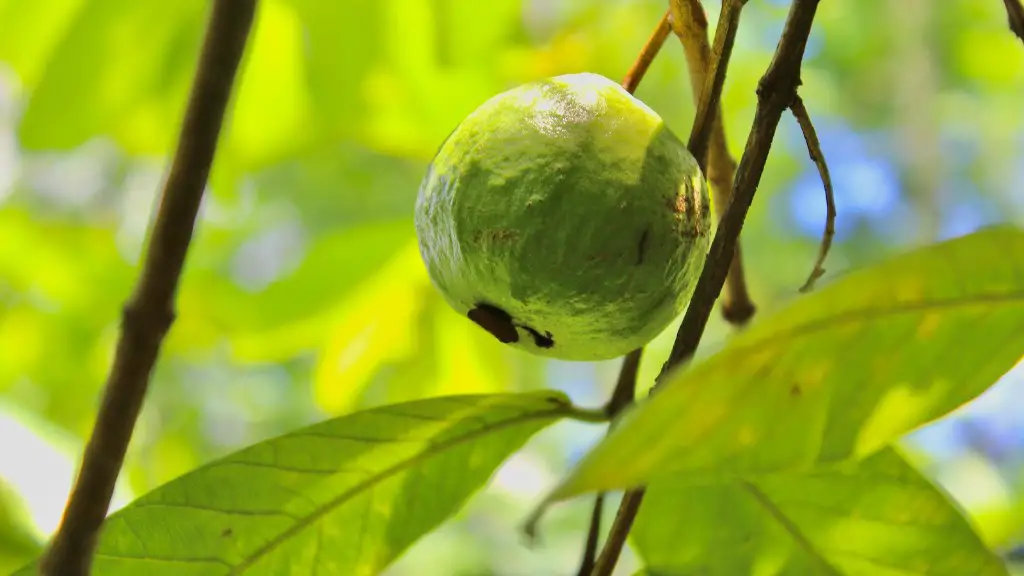The Growing Period of Avocado Trees
Avocado trees are a long-term investment. While it’s true that they are a slow-growing fruit tree – they can take up to five years to reach maturity – they also have a longer lifespan and higher yield than other trees. A mature avocado tree can produce up to 700 pounds of fruit annually, depending on the variety and conditions.
Avocado trees usually have a fairly short growing season, with most of the growth occurring in the summer months. However, the length of time for a tree to reach full maturity varies according to the variety and climate. Depending on the variety, an avocado tree can take anywhere from three to six years or more to bear fruit. Some types of avocado trees can also produce fruit earlier if they are in an ideal setting.
The Needs Of Avocado Trees
Avocado trees need plenty of sunlight, warmth, and water in order to produce the best fruit. Although they can thrive in a variety of climates, they prefer warmer regions and a soil pH of 6.5–7.5. The pH range of the soil is important because it affects the structure and nutrient content of the soil.
It’s also important to take into consideration the amount of space available for the tree to grow. Avocado trees require plenty of space to grow healthily, as well as ample exposure to sunshine to maximise their fruit production. When planting your tree, it is essential to choose a location that is not shaded by other trees or buildings.
Avocado trees also need regular watering to ensure healthy growth, during the tree’s first year especially. Once the tree is mature, give it deep watering once or twice a week, depending on the climate and soil conditions. The soil should be evenly moist but not overly wet.
Feeding and Pruning Avocado Trees
Avocado trees need a regular feeding schedule, particularly during the first year of growth. Feeding a young avocado tree with a balanced fertiliser is important to keep it healthy and promote vigorous growth. As the tree matures, the frequency with which it needs to be fertilised can be reduced, as long as it is receiving adequate nutrients from the soil.
Pruning is another important activity for maintaining an avocado tree’s health. Pruning avocado trees not only improves the shape and size of the tree, but can also increase fruit production. Pruning can also help promote better air circulation and discourage pests and diseases. Pruning should be done after the tree has fruited, and it is best to do it in early spring.
Harvesting Avocado Fruit
Harvesting an avocado tree’s fruit requires discretion and patience. Generally, avocados are safe to eat when they are slightly soft to the touch. As they ripen, they should be periodically checked to ensure they’re fit for eating. Avocados should never be picked while they are still hard. Harvesting the fruit too early can cause them to ripen prematurely, resulting in an unpleasant flavour.
When picking avocado fruit, it’s important to handle them carefully to avoid bruising. Avocado trees tend to take on the same pattern of bearing each year, so it may take one or two seasons before the pattern becomes clear. Once the pattern is discernible, it should be easier to time harvesting.
Common Diseases and Pests of Avocado Trees
Avocado trees are vulnerable to certain diseases and pests. The most common diseases are root rot and anthracnose, both of which can be prevented by making sure the tree gets enough water. These diseases can also be treated with fungicides.
Pest control is also important for protecting an avocado tree. Common pests that can infest avocado trees include avocado thrips, fruit flies, avocado weevils, and citrus moth. Applying organic insecticides can help to reduce pest damage, as well as encourage proper growth.
It’s also important to watch for signs of crown rot, which can occur if the tree is overwatered. To minimise the risk of crown rot, it is important to keep the soil around the roots of the tree well-drained and monitor the plant’s water supply.
Caring For Avocado Trees In Winter
Avocado trees are also somewhat sensitive to cold temperatures. In regions that are prone to sizeable freezing periods, it is important to provide extra insulation for the tree in order to protect it from frost and preserve its fruit. This can include covering the tree with landscaping fabric, wrapping it in blankets, or covering the tree with a plastic sheet overnight.
In addition to winter protection, it is also essential to water the tree regularly during the colder months to ensure it remains healthy. Avocado trees should be kept slightly moist, but not overly saturated, during colder months to ensure the roots are getting enough moisture to prepare them for the next growing season.
Conclusion
Although it can take up to five years for an avocado tree to reach full maturity and start to bear fruit, this investment can sometimes be worth it. Avocado trees have a long lifespan, and they can produce large amounts of fruit yearly. Avocado trees require a lot of care and attention, but with proper maintenance they can be a rewarding and profitable experience.


